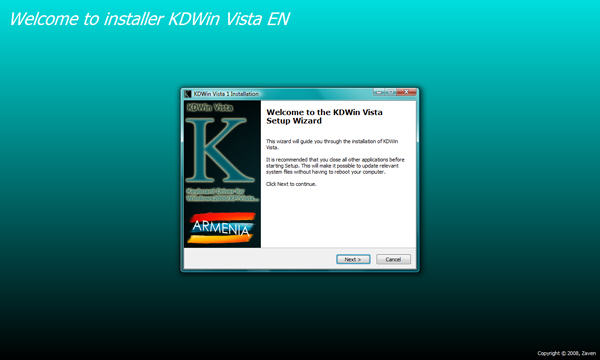
In some variants, it encodes the section sign (§) instead.
#KDWIN ARMENIAN FOR WINDOWS 10 CODE#
Some mappings incorrectly claim that it has a code point of U+0530.Ĭode value 20 is the regular SPACE character code values 00–1F and 7F are not assigned to characters by AST 34.005, though they may be the same as the ASCII control characters that are located in those positions.Ĭode value 22 is used to encode the Armenian ligature ew (և). In this table, code value 21 is the eternity sign, which has, since 2013, a designated point in Unicode U+058E (LEFT-FACING ARMENIAN ETERNITY SIGN) and another for its right-facing variant: U+058D (RIGHT-FACING ARMENIAN ETERNITY SIGN). However, this encoding cannot map all the punctuation characters normally needed for Armenian, so the missing characters must be approximated using fallbacks to ASCII punctuation (some Armenian fonts may display these ASCII punctuation using the rendering intended for the Armenian characters that are mapped to them by these fallbacks).ĪrmSCII-7 AST 34.005:1997 (ArmSCII-7)
#KDWIN ARMENIAN FOR WINDOWS 10 ISO#
It is a rearrangement of ArmSCII-8, to work with existing DOS and Mac code that reserve a range of code values for characters not intended for text but for presentation layout, using modified fonts it is, however, considered as a "hack" of the code pages over which it is applied, as neither DOS (nor Windows in the "OEM" compatibility codepages used by the text-only console) nor MacOS has ever supported this encoding natively, notably in their file system (but this is also true for the now deprecated ISO 10585 standard). None of the ArmSCII encodings have reached international approval (unlike the ISO 10585 standard, despite of the critics sent by the official Armenian standard body to ISO/DIS JTC 1/SC 2/WG 2, working on single byte-coded character sets) because all international efforts have been made since then to work with the UCS (in Unicode and ISO 10646).ĪrmSCII-8 is intended for use on Unix and Windows systems, and for information interchange on the It just consists in remapping ArmSCII-7 in the higher range above the standard US ASCII range.ĪrmSCII-8A is intended for use on DOS and Mac systems. Note that each ArmSCII encoding also has several minor variants, depending on the revision of the related Armenian standard (which was not made official before 1997, and was defined informally before that this has caused various confusions and the mappings described below are just best practices according to the latest 1997 revision of the Armenian standard) that may change the exact mapping and usage of a few punctuation characters and symbols.

The following three main variants are defined: It is usually better to use Unicode for proper interchange of Armenian text for web browsers and email, since most modern computers do not support ArmSCII by default. Microsoft Windows does not support them, for example.

Very few systems support these encodings.

2.2 Windows Paratype code page, replaced by ArmSCII-8 by 2005Įncodings defined in the ArmSCII standard.

2 Support for the Armenian script in other standards.1 Encodings defined in the ArmSCII standard.


 0 kommentar(er)
0 kommentar(er)
